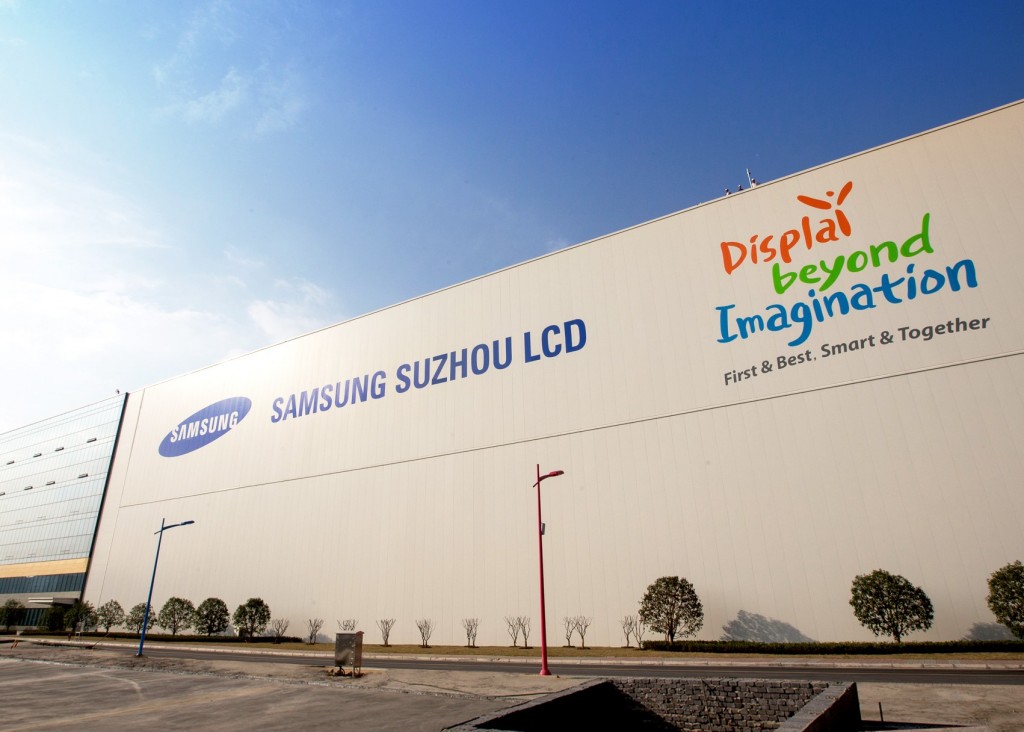Samsung Display
Samsung pulls out of LCD panel market to bet on quantum dot OLED
By Aug 31, 2020 (Gmt+09:00)
2
Min read
Most Read
LG Chem to sell water filter business to Glenwood PE for $692 million


KT&G eyes overseas M&A after rejecting activist fund's offer


Kyobo Life poised to buy Japan’s SBI Group-owned savings bank


StockX in merger talks with Naver’s online reseller Kream


Meritz backs half of ex-manager’s $210 mn hedge fund


Samsung Display Co. Ltd. has sold its LCD panel plant in China to China Star Optoelectronics Technology (CSOT) for $1.08 billion, withdrawing from the low-margin liquid crystal display (LCD) market.
The pullout is part of Samsung’s efforts to concentrate on high-value organic light-emitting diode (OLED) panels to which the technology giant will add quantum dot (QD) technology to boost screens' color performance.
Under the agreement with CSOT, the display maker owned by Chinese electronics company TCL Technology has acquired Samsung Display’s two units running the LCD plant in Suzhou, according to TCL Technology’s regulatory filing on August 28.
CSOT, China’s No.2 display manufacturer, already took an additional 10% stake in one of the units. With the acquisition, it will expand its presence in the large-size LCD panel market.

Profit margins from LCD panels have been declining as Chinese manufacturers, led by BOE and CSOT, are rapidly increasing their share with cheaper panels.
Last year, Chinese panel makers accounted for 40.4% of the global market for large-size LCDs, or larger than 9 inches, according to Omdia, a technology research company. Taiwanese and South Korean companies came second and third with shares of 31.1% and with 23.9%, respectively.
South Korea's LG Display Co. Ltd. runs an LCD panel plant in Guangzhou, China. But this year it plans to stop producing LCD panels used for TVs to move into the higher-value OLED business.
In November 2019, Samsung Display announced a five-year plan to invest 13.1 trillion won ($11 billion) to roll out QD OLED next-generation display panels. It is building the production lines in South Korea with an aim to mass produce them from the second quarter of next year.
Samsung’s QD OLED uses blue OLED as a light emitter with the QD color filter layer placed above to improve color performance.
For its part, LG Display also produces similar displays, but uses white OLED as an emitting source.
As a next-generation model, Samsung Display is developing QD nanocrystal displays, which also come with QD color filters, but use micro-LED as a lighting source. They consume less energy than conventional OLEDs and resolve the problem of burn-in, when a persistent part of the image remains on the screen even after the screen is turned off.
Write to Hyung-suk Song at click@hankyung.com
The pullout is part of Samsung’s efforts to concentrate on high-value organic light-emitting diode (OLED) panels to which the technology giant will add quantum dot (QD) technology to boost screens' color performance.
Under the agreement with CSOT, the display maker owned by Chinese electronics company TCL Technology has acquired Samsung Display’s two units running the LCD plant in Suzhou, according to TCL Technology’s regulatory filing on August 28.
CSOT, China’s No.2 display manufacturer, already took an additional 10% stake in one of the units. With the acquisition, it will expand its presence in the large-size LCD panel market.

Profit margins from LCD panels have been declining as Chinese manufacturers, led by BOE and CSOT, are rapidly increasing their share with cheaper panels.
Last year, Chinese panel makers accounted for 40.4% of the global market for large-size LCDs, or larger than 9 inches, according to Omdia, a technology research company. Taiwanese and South Korean companies came second and third with shares of 31.1% and with 23.9%, respectively.
South Korea's LG Display Co. Ltd. runs an LCD panel plant in Guangzhou, China. But this year it plans to stop producing LCD panels used for TVs to move into the higher-value OLED business.
In November 2019, Samsung Display announced a five-year plan to invest 13.1 trillion won ($11 billion) to roll out QD OLED next-generation display panels. It is building the production lines in South Korea with an aim to mass produce them from the second quarter of next year.
Samsung’s QD OLED uses blue OLED as a light emitter with the QD color filter layer placed above to improve color performance.
For its part, LG Display also produces similar displays, but uses white OLED as an emitting source.
As a next-generation model, Samsung Display is developing QD nanocrystal displays, which also come with QD color filters, but use micro-LED as a lighting source. They consume less energy than conventional OLEDs and resolve the problem of burn-in, when a persistent part of the image remains on the screen even after the screen is turned off.
Write to Hyung-suk Song at click@hankyung.com
Yeonhee Kim edited this article
More to Read
-

-
 Korean chipmakersSamsung in talks to supply customized HBM4 to Nvidia, Broadcom, Google
Korean chipmakersSamsung in talks to supply customized HBM4 to Nvidia, Broadcom, Google21 HOURS AGO
-
 EnergyLS Cable breaks ground on $681 mn underwater cable plant in Chesapeake
EnergyLS Cable breaks ground on $681 mn underwater cable plant in ChesapeakeApr 29, 2025 (Gmt+09:00)
-
 Business & PoliticsUS tariffs add risk premium to dollar assets: Maurice Obstfeld
Business & PoliticsUS tariffs add risk premium to dollar assets: Maurice ObstfeldApr 29, 2025 (Gmt+09:00)
-

Comment 0
LOG IN


